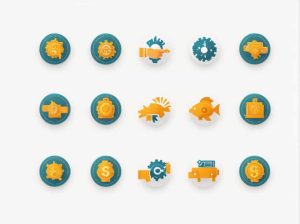Fiscal policy plays a crucial role in shaping a country’s economic stability and growth. Governments use fiscal policy to influence economic conditions through taxation and government spending. Understanding how fiscal policy works helps individuals businesses and policymakers make informed financial and economic decisions.
This topic explains the meaning of fiscal policy its types tools and its effects on economic growth inflation and employment.
What Is Fiscal Policy?
Fiscal policy refers to the use of government spending and taxation to influence a country’s economy. It is a key tool used by governments to regulate economic growth control inflation and reduce unemployment.
By adjusting tax rates and public expenditures governments can either stimulate a slow economy or cool down an overheating one. The primary goal of fiscal policy is to ensure economic stability and sustainable growth.
Objectives of Fiscal Policy
The main objectives of fiscal policy include:
- Economic Growth – Encouraging business activities and investments.
- Price Stability – Controlling inflation and deflation.
- Employment Generation – Reducing unemployment by creating job opportunities.
- Redistribution of Wealth – Reducing income inequality through progressive taxation.
- Sustainable Public Debt – Managing national debt to prevent financial crises.
Types of Fiscal Policy
1. Expansionary Fiscal Policy
Expansionary fiscal policy is used to stimulate economic growth during periods of recession or low economic activity. It involves:
- Increasing government spending – Investing in infrastructure education and healthcare to create jobs and boost demand.
- Reducing taxes – Lowering income and corporate taxes to increase disposable income and encourage spending.
Example of Expansionary Fiscal Policy
During the 2008 financial crisis many governments reduced taxes and increased public spending to revive economic activity.
2. Contractionary Fiscal Policy
Contractionary fiscal policy is used to reduce inflation and slow down an overheating economy. It involves:
- Decreasing government spending – Cutting public sector projects to limit excessive money flow.
- Increasing taxes – Raising income or corporate taxes to reduce consumer and business spending.
Example of Contractionary Fiscal Policy
If inflation rises too quickly a government might increase tax rates and cut down infrastructure spending to prevent excessive demand.
Key Tools of Fiscal Policy
Governments implement fiscal policy through two main tools:
1. Government Spending
Public spending directly impacts economic activity. Governments invest in:
- Infrastructure (roads bridges public transport)
- Healthcare (hospitals medical facilities)
- Education (schools universities scholarships)
- Social programs (unemployment benefits pensions)
Increased government spending can boost economic growth while reduced spending helps control inflation.
2. Taxation
Taxes influence consumer and business behavior. Common types of taxes include:
- Income tax – Levied on individual earnings.
- Corporate tax – Charged on company profits.
- Sales tax (VAT/GST) – Applied to goods and services.
- Property tax – Imposed on real estate.
Lower taxes increase disposable income and spending while higher taxes reduce demand and slow inflation.
How Fiscal Policy Affects the Economy
1. Impact on Economic Growth
Fiscal policy stimulates or slows down economic growth:
- Expansionary policy boosts GDP by increasing demand.
- Contractionary policy controls excessive growth to prevent economic bubbles.
2. Impact on Inflation
High inflation reduces purchasing power. To control it governments:
- Increase taxes to reduce spending.
- Cut public spending to lower demand.
3. Impact on Employment
Government spending creates jobs in:
- Public infrastructure projects (construction maintenance).
- Government-funded programs (education healthcare).
Tax cuts also encourage businesses to hire more workers.
4. Impact on Budget Deficit and National Debt
If a government spends more than it earns in taxes it runs a budget deficit. Over time large deficits lead to increased national debt which must be managed carefully to avoid financial crises.
Fiscal Policy vs. Monetary Policy
| Feature | Fiscal Policy | Monetary Policy |
|---|---|---|
| Definition | Use of government spending and taxation to influence the economy | Use of interest rates and money supply control by central banks |
| Controlled By | Government (Ministry of Finance Treasury) | Central Bank (Federal Reserve ECB etc.) |
| Main Tools | Government spending taxation | Interest rates money supply regulation |
| Used To | Stimulate growth control inflation manage employment | Control inflation stabilize currency regulate credit supply |
Both policies work together to maintain economic stability.
Challenges and Limitations of Fiscal Policy
- Time Lag – Implementing tax changes or public projects takes time.
- Political Constraints – Government decisions may be influenced by political motives rather than economic needs.
- Public Debt – Excessive government spending can lead to high national debt.
- Tax Burden – High taxes may discourage investment and reduce productivity.
Real-World Examples of Fiscal Policy
1. The U.S. Stimulus Packages
- During the COVID-19 pandemic the U.S. government passed stimulus bills to provide financial aid unemployment benefits and business support.
- These measures helped stabilize the economy and reduce unemployment.
2. European Austerity Measures
- After the 2008 financial crisis many European countries adopted contractionary fiscal policies by reducing public spending and increasing taxes to control national debt.
Fiscal policy is a powerful tool that governments use to manage economic growth control inflation and reduce unemployment. By adjusting tax rates and public spending policymakers aim to stabilize the economy and ensure long-term prosperity.
Understanding fiscal policy helps individuals businesses and investors make better financial decisions and anticipate economic trends. Whether expansionary or contractionary fiscal policy plays a key role in shaping the financial health of a nation.



